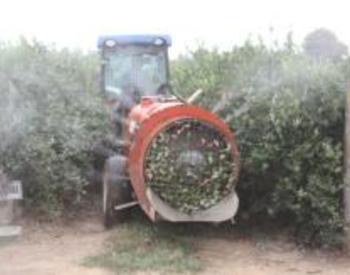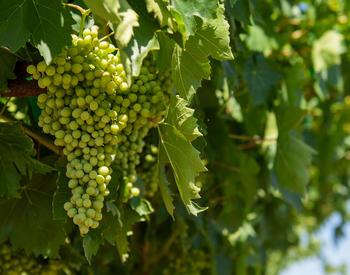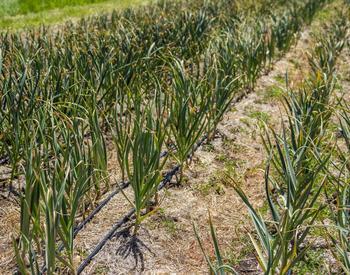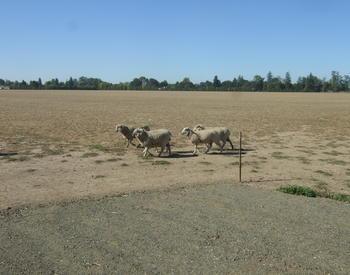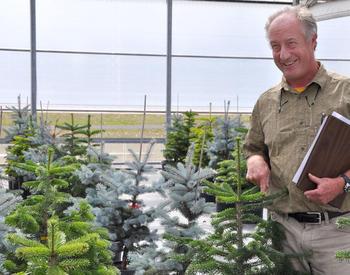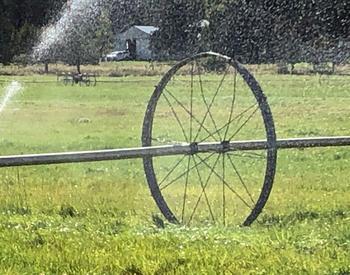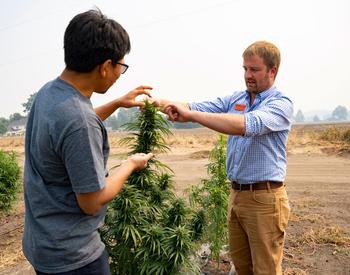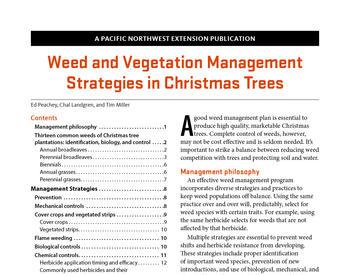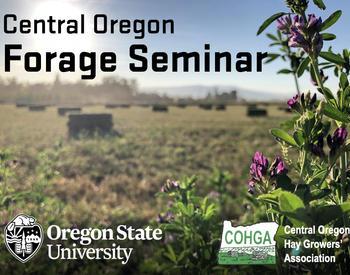Good morning, everybody. My name is Kirk Stroda at Stroda Brothers Farms. We're a 5th generation
farm out here at Cheshire, Oregon. Been in the Christmas tree business for about
35 years. We've got 150 acres, roughly, in trees. We try to plant 20,000 trees a year.
We started watering first in 2021. It was a hot,
dry summer. We had that heat dome that came through and we didn't have any
moisture that followed that for almost two months. We started losing some seedlings,
so I felt we better do something or we're going to end up having all of them turn around and die,
and a lot of people up north that didn't water just lost the whole fields.
I do not want to have to go back and do a bunch of inter-planting and have to spend more money on
another seedling and have to spend the money on labor costs. I wanted to be proactive. I
wanted to have the water in - if we don't get any rain, that the moisture will already be in
the ground and I can keep that seedling alive. If the trees don't live, I don't get paid.
Okay, come with me, and I'll go over and show you how we've got our system set up.
So what we have, we're running a drip system. You can see we got the tank,
we've got a Honda motor that powers it. We do not have water any wells or water capability
up here on this farm. So if we're going to do this system we have to bring water to it.
I have another 1,800 gallon tank. We fill up at the farm and I bring it up and I keep this
tank full all the time. I never let it run out. I just keep bringing new water to this. I run a
garden hose off of that and have it run over To our drip system. It's just a easy quick connect.
If you're running off of river water or pond water, you'll want to have a
filter system. We were getting some algae and what that was doing then it was plugging up
our drip system line. So that's real quick and simple to be able to do.
When you buy the drip system, it'll come in just a big roll and you'll have to buy the ends to splice
them together or to be able to attach to a garden hose or whatever. All of our fields are different
lengths, so they'll have a coupler that I can make it add more length to the lines if I need to.
What I'm going to show you now is actually the drip system that we're using. We have
emitters every one foot and what they emit is 0.26 gallons per hour. We've gone for 2
hours. You can see where the drip was. You can dig down and see if the water is getting down
to the depth that you want. That's got water down close to a foot in that two hour period,
which is more than enough. So, it gets a lot of water in the ground.
We've put sawdust around all of our newly planted seedlings. It just holds that much
more moisture in the ground. Last year we didn't have to water with the sawdust.
We kept enough moisture in the ground that we had great survival last year.
What we'll do then is show you how we end up moving the line. I like it when we're moving
it over to another row, I like to tie it off to something. What this does is when you're
pulling your hose and moving it over to the other row, it just kind of keeps it stationary and you
don't end up pulling it down the field with you. Every ten or 15 trees I always like to look back,
and if it's off a little bit, it's easy. - this hose is very easy to be able to kind
of flip and make it get back in line. The closer to the tree, the better.
So what we'll have is one line in this row, and then I'll have another line eight rows over,
and then every two, two and a half hours, I'll just keep moving both rows until this
row gets over to the row that we've already watered from the other line.
The proof is in the pudding. Have a control, leave something that you didn't water or spray
or fertilize. This is one of the controls that we end up leaving. So we made sure that doing the
watering system was actually going to pay off. You can sure see the difference here between the stuff
that we've watered and have the sawdust on. You can see there's virtually no mortality out here
versus go to the other side and look at all the death that we've got. No sawdust and no watering.
From when I started it's taken me one month to get everything done,
but that's all been by myself. I've done all the watering and got the water up here. We can do it
the other direction - with a tractor and a trailer with a water tank, but you've got labor doing that
and then you don't get that much water on the tree. It has a tendency to want to run off. So I
don't think you're getting maybe a quart into the ground. This way, you're getting everything you
put in. With the drip system it's slowly going in every bit of that's going into the ground.
And we do use this on all the varieties, the trees alive:
Nordman, Noble, and Douglas fir. So we do this on all of them to keep them alive.

